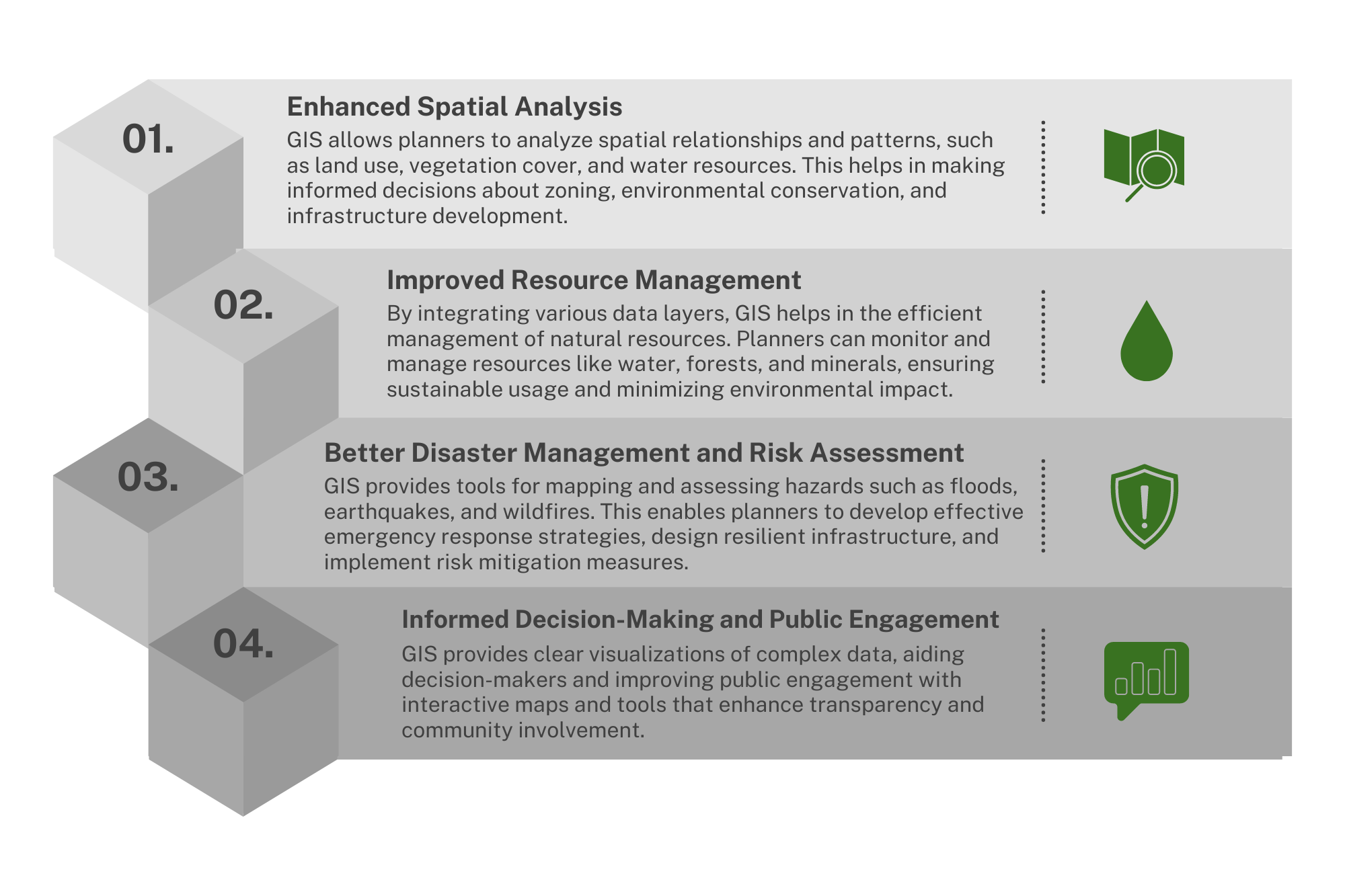Discover How GIS Can Revolutionize Your Environmental Management
Explore how Geographic Information Systems (GIS) enhance environmental monitoring, resource management, and impact assessment. Discover practical applications and see how GIS can drive sustainability efforts.

Introduction to Urban Planning with GIS

How GIS Technology Drives Smart City Solutions

Advantages of Using GIS in Environmental & Urban Planning

Key Features of GIS in Environmental & Urban Planning
Optimized Urban Planning
Enhance urban planning with detailed spatial analysis, ensuring accurate site selection, zoning, and infrastructure development.
Enhanced Environmental Management
Monitor environmental impact, track natural resources, and ensure compliance with environmental regulations.
Comprehensive Land Use Analysis
Gain insights into land use patterns to improve zoning decisions, resource allocation, and urban development strategies.
Safety Enhancements
Identify hazard-prone areas, implement targeted safety measures, and support emergency response efforts.
Sustainable Practices
Minimize environmental impact by optimizing land use, resource management, and adopting eco-friendly practices.
Case Studies
Improving Urban Planning with GIS


Optimized Infrastructure Development
Geographic Information Systems (GIS) play a crucial role in infrastructure development by mapping existing infrastructure and pinpointing areas for new development or upgrades. GIS provides a comprehensive view of current infrastructure assets, enabling planners to identify gaps and opportunities for improvement. Additionally, GIS supports efficient resource allocation by facilitating strategic planning for infrastructure expansion, ensuring that resources are utilized effectively and developments are well-coordinated.
Benefits of Implementing GIS in
Environmental & Urban Planning
Cost Savings
Reduce operational costs through efficient planning and resource allocation. GIS helps minimize waste, optimize resource usage, and ensure timely project completion.
Increased Efficiency
Enhance overall operational efficiency with real-time tracking and optimized project management. GIS streamlines processes, reduces delays, and ensures timely project delivery, boosting productivity.
Improved Coordination
Facilitate better coordination among project stakeholders with accurate spatial data and real-time updates. GIS enables seamless communication and collaboration across teams.
Safety and Reliability
Enhance safety with targeted measures and reliable emergency response. GIS identifies hazard-prone areas, supports emergency coordination, and ensures the safety of your operations.
Sustainability
Promote sustainable practices and reduce your environmental footprint. GIS helps optimize site selection, adopt eco-friendly practices, and support green construction, contributing to a healthier planet.
What Our Clients Say





Ready to Transform Your Operations?
Frequently Asked Questions
GIS enhances urban planning by providing detailed spatial analysis, accurate site selection, and real-time data for informed decision-making, leading to more effective and streamlined planning.
GIS offers real-time project monitoring, efficient resource management, regulatory compliance, and improved communication among stakeholders, optimizing resource allocation and ensuring project efficiency.
Yes, GIS enhances environmental management by providing comprehensive insights into natural resources, tracking environmental impact, and ensuring compliance with regulations, improving overall project efficiency.
GIS promotes sustainability by optimizing site selection, reducing waste, supporting eco-friendly practices, and monitoring environmental impact in real-time, ensuring sustainable planning practices.
